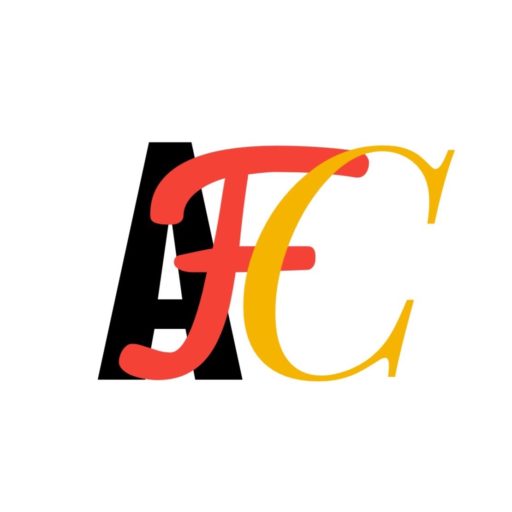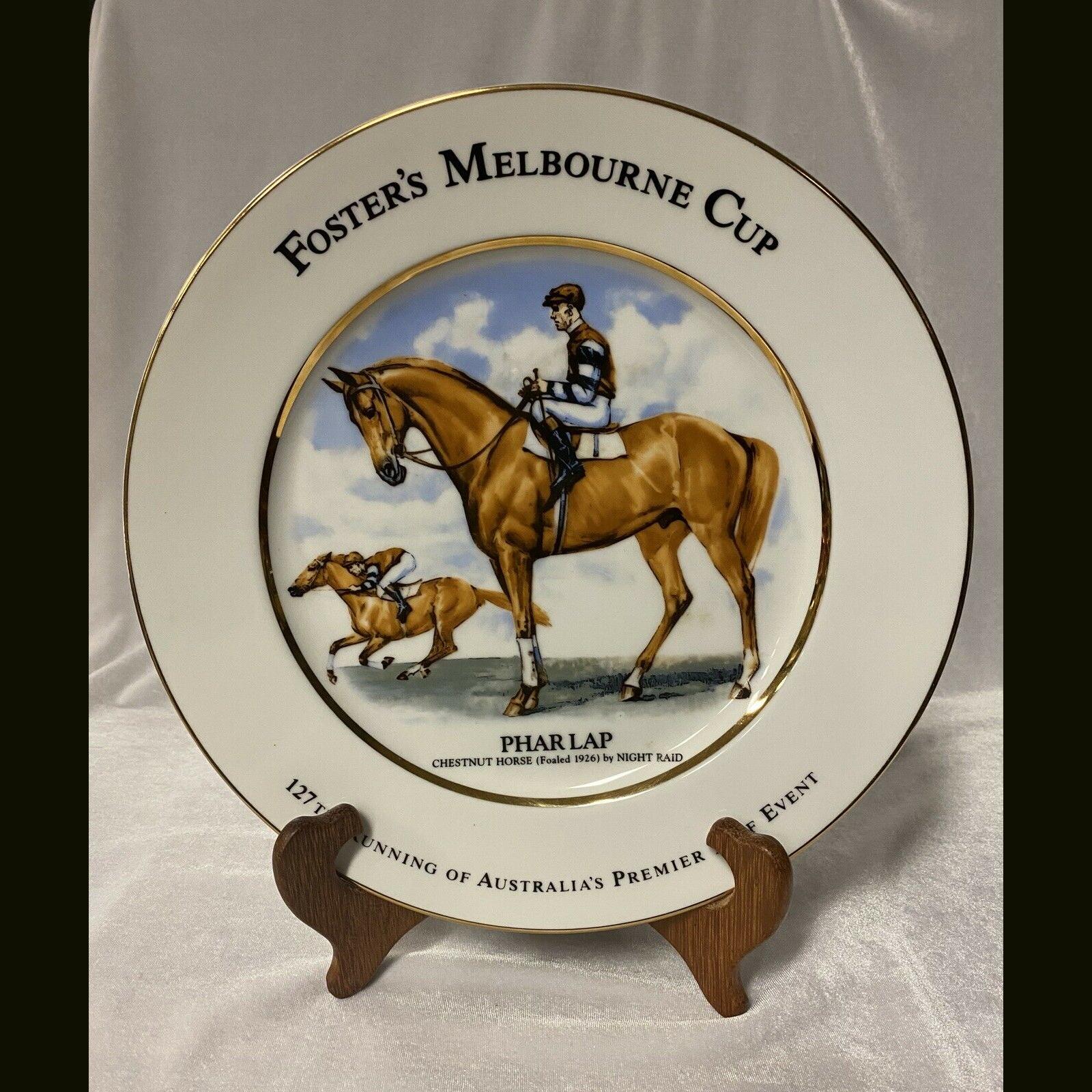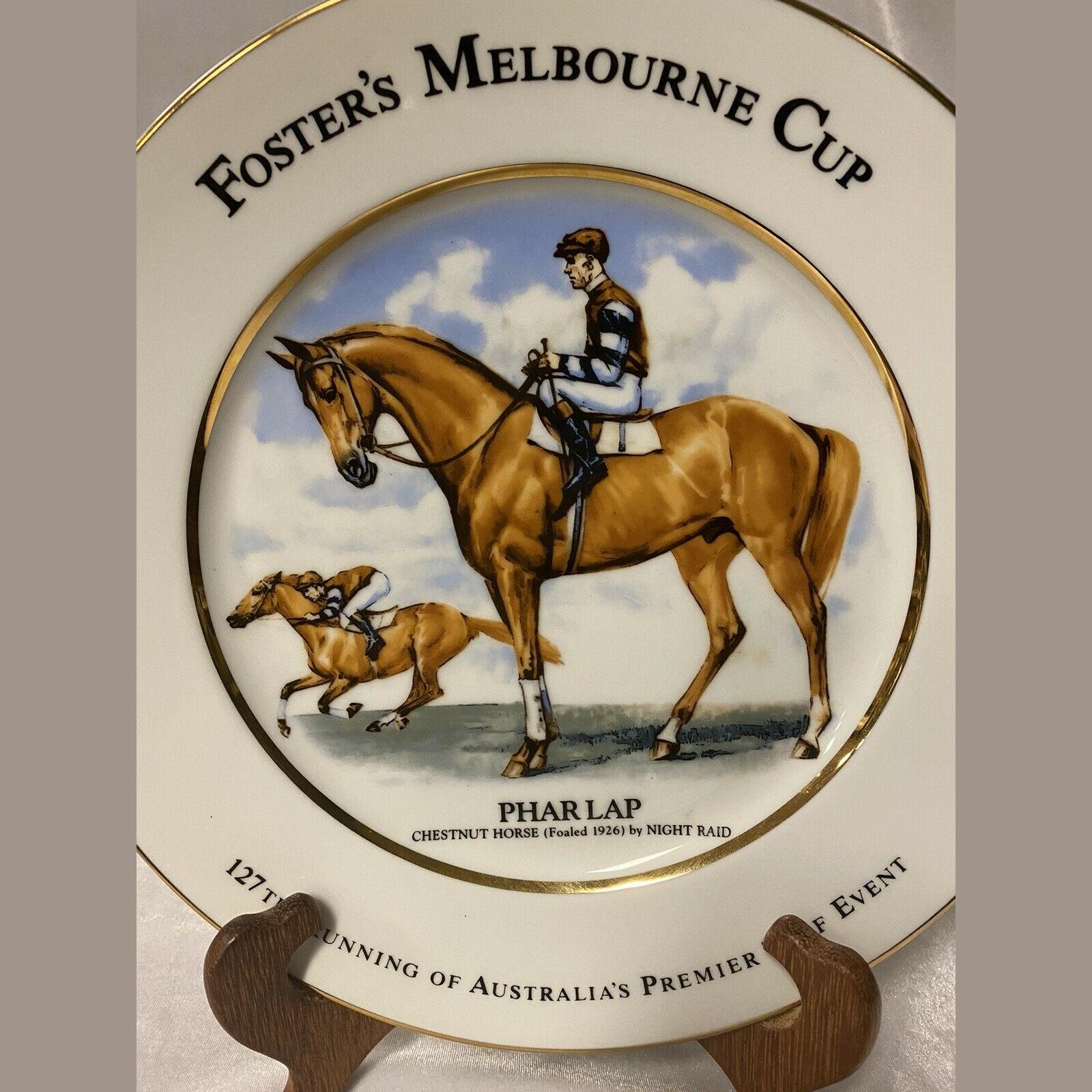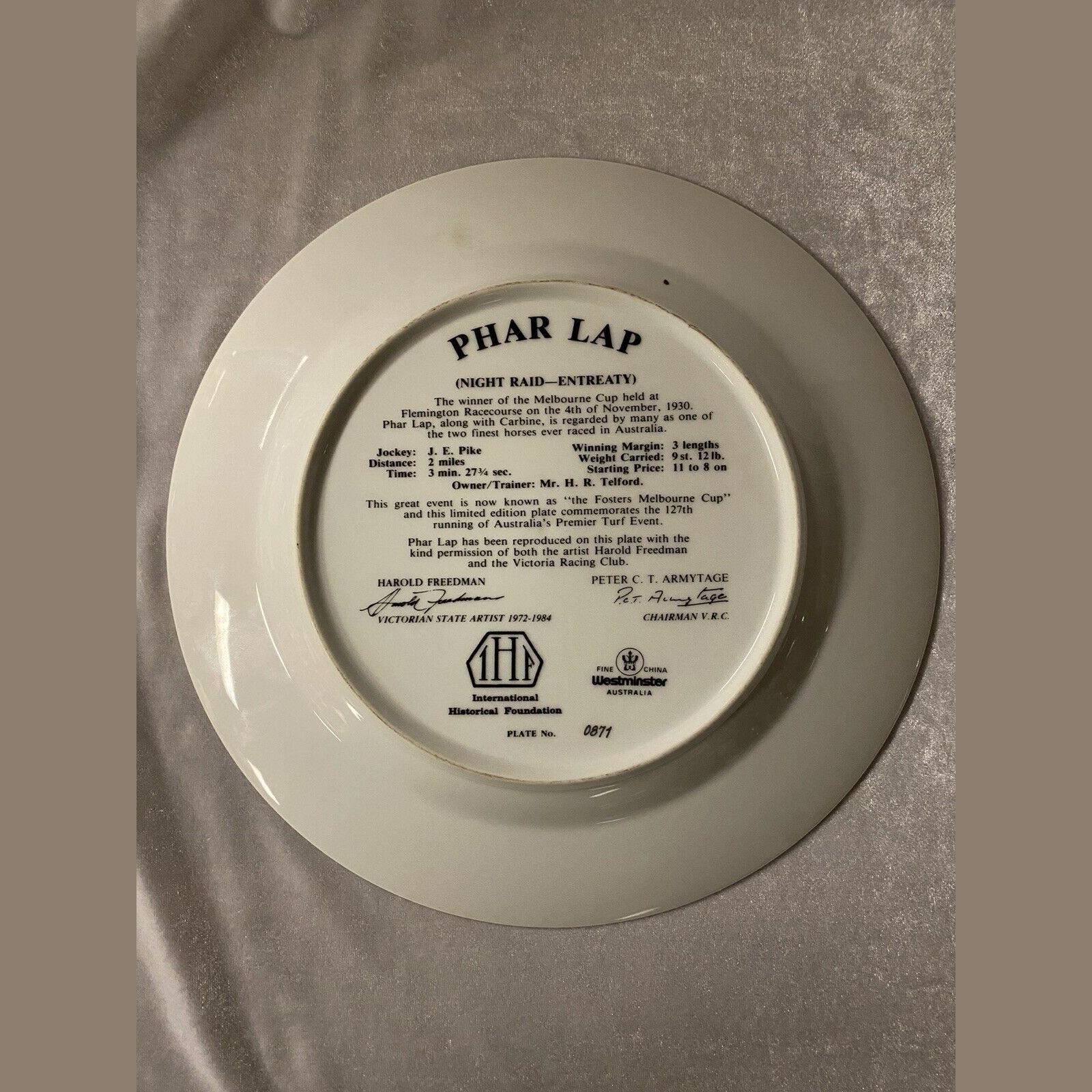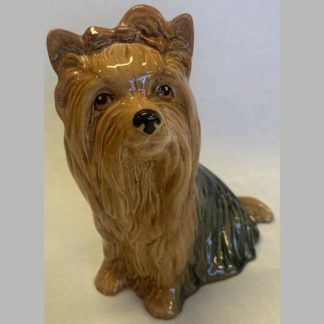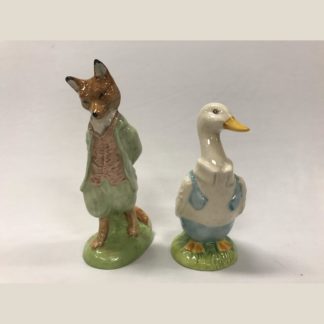Bio & Information
Phar Lap (NZ 1926-1932) Bio
Phar Lap was a champion Thoroughbred racehorse whose achievements captured the Australian public’s imagination during the early years of the Great Depression Foaled in New Zealand he was trained and raced in Australia by Harry Telford Phar Lap dominated Australian racing during a distinguished career winning a Melbourne Cup two Cox Plates an AJC Derby and 19 other weight for age races He then won the Agua Caliente Handicap in Tijuana Mexico in track-record time in his final race After a sudden and mysterious illness Phar Lap died in 1932 in Atherton California At the time he was the third highest stakes-winner in the world His mounted hide is displayed at the Melbourne Museum his skeleton at Museum of New Zealand Te Papa Tongarewa and his heart is currently on display at the National Museum of Australia Canberra The name Phar Lap derives from the common Zhuang and Thai word for lightning: ฟ้าแลบ [fáː lɛ̂p], literally ‘sky flash’ Phar Lap was called the “Wonder Horse”, “Red Terror”, “Bobby” and “Big Red” (the latter nickname was also given to two of the greatest United States racehorses Man o’ War and Secretariat) He was sometimes referred to as “Australia’s wonder horse” According to the Museum of Victoria Aubrey Ping a medical student at the University of Sydney suggested “farlap” as the horse’s name Ping knew the word from his father a Zhuang-speaking Chinese immigrant Telford liked the name but changed the F to PH to create a seven letter word which was split in two in keeping with the dominant naming pattern of Melbourne Cup winners A chestnut gelding, Phar Lap was foaled in Seadown near Timaru in the South Island of New Zealand He was sired by Night Raid from Entreaty by Winkie He was by the same sire as the Melbourne Cup winner Nightmarch Phar Lap was a brother to seven other horses Fortune’s Wheel, Nea Lap (won 5 races), Nightguard, All Clear, Friday Night, Te Uira and Raphis, none of which won a principal (stakes) race He was a half-brother to another four horses, only two of which were able to win any races at all Sydney trainer Harry Telford persuaded American businessman David J. Davis to buy the colt at auction, based on his pedigree Telford’s brother Hugh, who lived in New Zealand, was asked to bid up to 190 guineas at the 1928 Trentham Yearling Sales When the horse was obtained for a mere 160 guineas, he thought it was a great bargain until the colt arrived in Australia The horse was gangly, his face was covered with warts, and he had an awkward gait Davis was furious when he saw the colt as well, and refused to pay to train the horse Telford had not been particularly successful as a trainer, and Davis was one of his few remaining owners To placate Davis, he agreed to train the horse for nothing, in exchange for a two-thirds share of any winnings Telford leased the horse for three years and was eventually sold joint ownership by Davis Although standing a winning racehorse at stud could be quite lucrative, Telford gelded Phar Lap anyway, hoping the colt would concentrate on racing Phar Lap finished last in the first race and did not place in his next three races He won his first race on 27 April 1929 the Maiden Juvenile Handicap at Rosehill ridden by Jack Baker of Armidale a 17-year-old apprentice He didn’t race for several months but was then entered in a series of races in which he moved up in class Phar Lap took second in the Chelmsford Stakes at Randwick on 14 September 1929 and the racing community started treating him with respect He won the Rosehill Guineas by three lengths on 21 September 1929 ridden by James L. Munro As his achievements grew there were some who tried to halt his progress Criminals tried to shoot Phar Lap on the morning of Saturday 1 November 1930 after he had finished track work They missed and later that day he won the Melbourne Stakes and three days later the Melbourne Cup as odds-on favourite at 8 to 11 Phar Lap winning the Melbourne Cup Race from Second Wind and Shadow King on 4 November 1930 In the four years of his racing career Phar Lap won 37 of 51 races he entered including the Melbourne Cup being ridden by Jim Pike in 1930 with 9 st 12 lb (138 pounds (63 kg))In that year and 1931 he won 14 races in a row From his win as a three-year-old in the VRC St Leger Stakes until his final race in Mexico Phar Lap won 32 of 35 races In the three races that he did not win he ran second on two occasions beaten by a short head and a neck and in the 1931 Melbourne Cup he finished eighth when carrying 10 st 10 lb (150 pounds (68 kg)) Phar Lap at the time was owned by American businessman David J. Davis and leased to Telford After their three-year lease agreement ended Telford had enough money to become joint owner of the horse Davis then had Phar Lap shipped to North America to race Telford did not agree with this decision and refused to go so Davis who along with his wife travelled to Mexico with him brought Phar Lap’s strapper Tommy Woodcock as his new trainer Phar Lap was shipped by boat to Agua Caliente Racetrack near Tijuana Mexico to compete in the Agua Caliente Handicap which was offering the largest prize money ever offered in North America racing Phar Lap won in track-record time while carrying 129 pounds (58.5 kg) The horse was ridden by Australian jockey Billy Elliot for his seventh win from seven rides From there the horse was sent to a private ranch near Menlo Park California while his owner negotiated with racetrack officials for special race appearances Early on 5 April 1932 the horse’s strapper for the North American visit Tommy Woodcock found him in severe pain and with a high temperature Within a few hours Phar Lap haemorrhaged to death An autopsy revealed that the horse’s stomach and intestines were inflamed leading many to believe the horse had been deliberately poisoned There have been alternative theories including accidental poisoning from lead insecticide and a stomach condition It was not until the 1980s that the infection could be formally identified In 2000 equine specialists studying the two necropsies concluded that Phar Lap probably died of duodenitis-proximal jejunitis an acute bacterial gastroenteritis Phar Lap’s skin was preserved by Louis Paul Jonas and is now exhibited as a taxidermy mount by Melbourne Museum In 2006 Australian Synchrotron Research scientists said it was almost certain Phar Lap was poisoned with a large single dose of arsenic in the hours before he died perhaps supporting the theory that Phar Lap was killed on the orders of US gangsters who feared the Melbourne Cup-winning champion would inflict big losses on their illegal bookmakers No real evidence of involvement by a criminal element exists however Sydney veterinarian Percy Sykes believes deliberate poisoning did not cause the death He said “In those days, arsenic was quite a common tonic, usually given in the form of a solution (Fowler’s Solution)” and suggests this was the cause of the high levels “It was so common that I’d reckon 90 percent of the horses had arsenic in their system” In December 2007 Phar Lap’s mane was tested for multiple doses of arsenic which if found would point to accidental poisoning On 19 June 2008 the Melbourne Museum released the findings of the forensic investigation conducted by Ivan Kempson University of South Australia and Dermot Henry Natural Science Collections at Museum Victoria Kempson analysed six hairs from Phar Lap’s mane at the Advanced Photon Source at Argonne National Laboratory near Chicago These high resolution X-rays detect arsenic in hair samples showing the specific difference “between arsenic, which had entered the hair cells via the blood and arsenic which had infused the hair cells by the taxidermy process when he was stuffed and mounted at the museum” Kempson and Henry discovered that in the 30 to 40 hours before Phar Lap’s death the horse ingested a massive dose of arsenic “We can’t speculate where the arsenic came from but it was easily accessible at the time” Henry said In October 2011 the Sydney Morning Herald published an article in which a New Zealand physicist and information from Phar Lap’s strapper state that the great horse was never given any tonic with arsenic and that he died of an infection Said Putt “Unless we are prepared to say that Tommy Woodcock was a downright liar which even today decades after the loveable and respected horseman’s death would ostracise us with the Australian racing public we must accept him on his word The ineluctable conclusion we are left with whether we like it or not is that Phar Lap’s impeccable achievements here and overseas were utterly tonic, stimulant, and drug-free” Contradicting this is the tonic book of Harry Telford Phar Lap’s owner and trainer on display in Museum Victoria Melbourne One recipe for a “general tonic” has a main ingredient of arsenic and has written below it: “A great tonic for all horses” Several theories have been proposed for the large amount of arsenic in Phar Lap’s body Phar Lap’s heart at the National Museum of Australia It was formerly held by the Institute of Anatomy in Canberra Following his death Phar Lap’s heart was donated to the Institute of Anatomy in Canberra and his skeleton to the New Zealand’s National Museum in Wellington After preparations of the hide by a New York City taxidermist his stuffed body was placed in the Australia Gallery at Melbourne Museum The hide and the skeleton were put on exhibition together when Wellington’s Te Papa Museum lent the skeleton to the Melbourne Museum in September 2010 as part of celebrations for the 150th running of the 2010 Melbourne Cup Phar Lap’s heart was remarkable for its size weighing 6.2 kilograms (14 lb) compared with a normal horse’s heart at 3.2 kilograms (7.1 lb) Now held at the National Museum of Australia in Canberra it is the object visitors most often request to see The author and film maker Peter Luck is convinced the heart is a fake In Luck’s 1979 television series This Fabulous Century the daughter of Walker Neilson the government veterinarian who performed the first post-mortem on Phar Lap says her father told her the heart was necessarily cut to pieces during the autopsy and the heart on display is that of a draught horse However the expression “a heart as big as Phar Lap” to describe a very generous or courageous person became a popular idiom Several books and films have featured Phar Lap including the 1983 film Phar Lap and the song “Phar Lap—Farewell To You” Phar Lap was one of five inaugural inductees into both the Australian Racing Hall of Fame and New Zealand Racing Hall of Fame In the Blood-Horse magazine ranking of the Top 100 U.S Thoroughbred champions of the 20th century Phar Lap was ranked No. 22 The horse is considered to be a national icon in both Australia and New Zealand In 1978 he was honoured on a postage stamp issued by Australia Post and features in the Australian citizenship test A $500,000 life-sized bronze memorial to Phar Lap was unveiled on 25 November 2009 near his birthplace at Timaru Phar Lap has been honoured with a life-sized bronze statue at Flemington Racecourse in Melbourne “Phar Lap Raceway” in Washdyke New Zealand (where he was foaled) was named in his honour with a life-size statue at the entrance Phar Lap has several residential streets named after him in Australia, New Zealand, and the United States (In many cases, the name is merged into a single word “Pharlap”)
Westminster Fine China Australia (Australia 1954-1998)
Stanley Rogers ran a wholesale cutlery, glassware and crockery business in Queen Street Melbourne On 6 October 1950 a new business Stanley Rogers and Son Ltd was registered to take over the previous business and was listed with a capital of 100,000 pounds
Westminster Fine China Australia story started in Melbourne at 7 Arnold Street Cheltenham in 1954 Stanley Rogers and Son Ltd then moved to 228 Bay Road Sandringham in 1977 into a 60,000 square foot (about 5,500 square metres) building that housed the factory, warehouse, office and showroom They initially used imported blanks from Japan which were made to their specifications and which were then decorated locally They produced a standard range of shapes for souvenir ware later expanding into a wide range of tea sets, dinnerware and many other styles of china ware In the early days, skilled staff were brought into Australia from both the United Kingdom and Italy and the focus was on the souvenir and giftware trade In the late 1960s they introduced to the Australian market a range of medium weight porcelain hotel ware under the Fineceram brand and later registering another brand Duraceram in 1984 By this time Westminster was part of a wider organization called Badgin Nominees Pty Ltd The 1980s also saw the production of a large number of limited edition plates for other companies for example Australia International Historical Foundation Westminster had an in-house art department that put together the designs and used computer generated designs in the later stages of the companies life These were placed onto the pieces by ceramic transfer printing and fired to seal them onto the items in large capacity electric kilns In the late 1980s and early 1990s there are blanks made in both Japan and Taiwan and marked with the last of the Westminster markings In the late 1980s they regularly produced items for other suppliers and by the mid-1990s most of the companies work was for the hospitality industry There was also a large part of the business making corporate coffee mugs and there was a smaller continuation of giftware featuring Aboriginal designs and Australian flora and fauna Some of these are for C R Hose and Isaacson Catering & Hospitality Supplies – Badgin Nominees including the Westminster brand was sold to Oneida Ltd New York USA in June 1998 by Stanley’s son William
